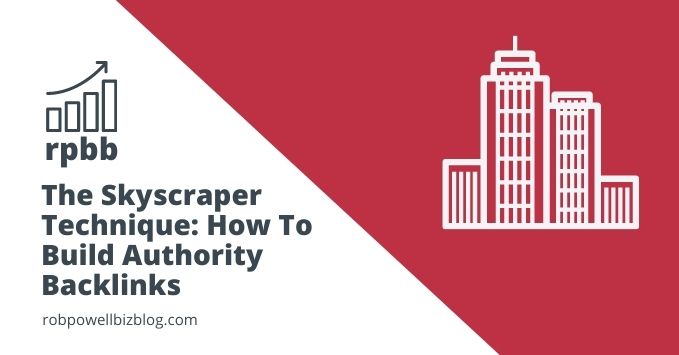
The skyscraper technique is a method of link building where you find websites that have linked to a piece of content. You then create an even better piece of content and ask those websites if they would like to link to your article instead.

Ideally, search engines would prefer that you don’t ask for backlinks. The backlinks they really value are the ones you acquire without asking for them.
But is it realistic to create outstanding content and then hope that people will find it in the search results and link to it?
It works to some extent.
But in a world where your competitors are actively building links, it’s a strategy that will leave you lagging behind.
I think most people agree that to keep up in the competitive world of SEO you need to do more than create amazing content: some kind of link building is required.
How The Skyscraper Technique Works
The skyscraper technique is a link building method pioneered by Brian Dean. He explains the technique in a 2016 article titled Link Building Case Study: How I Increased My Search Traffic by 110% in 14 Days.
The technique works like this:
- You find an authoritative article that ranks at the top of Google for a given keyword. We’ll call this the ‘existing’ article .
- You get a list of websites that have linked to the ‘existing’ article.
- You then write your own article on that same topic, making sure that your article is even better than the existing article . We’ll call this piece of content the ‘target’ article.
- You reach out to the websites that linked to the existing article and let them know that you have just written a better and more up-to-**** article than the one they linked to. You ask them if you would consider linking to your article instead.
The skyscraper technique is an effective link-building strategy because it targets websites that have already linked to content that is similar to your content.
The idea behind this approach to link-building is this: if a website has linked to an article on a particular topic, there’s a good chance they will link to a similar but better article on the same topic.
How To Do Skyscraper Link Building
In this post I’m going to walk you through the process of building backlinks using the skyscraper technique.
But I’m going to make one minor change to the process I outlined above. I already have an article that I want to build links to. So instead of writing a new article that is better than the existing article, I’ll simply be using an already published article of mine that fits the description of ‘skyscraper content’.
What Is Skyscraper Content?
Skyscraper content is content that is exceptional in some sense.
It could be an article that:
- is exceptionally thorough (i.e. more than 5000 words)
- is based on original research
- contains unusual insights
- contains an extended interview with an expert
- contains original material from expert contributors
- contains statistics compiled from different sources
In my case, the target article is a post I wrote titled ‘Search Engine Positioning: 17 Best Strategies for 2021’. It’s over 13,000 words in length so I’m confident that it’s at least as comprehensive (if not more so) than the existing article.
The Tools You Need
There are two tools you’ll need for this link-building exercise: Postaga and Ahrefs.
If you’re on a budget, no problems: you can get a free 14-day trial of Postaga and you can get a 7-day trial of Ahrefs for just $7.
Skyscraper Link Building – a 7-Step Process
Here’s the prospecting and outreach process for skyscraper link building.
Step 1: Find a piece of content on your website that is exceptional in some way.
Step 2: Go to Ahrefs > Keywords Explorer and type in the main keyword for your skyscraper article. For my example, I’m going to type in the keyword ‘search engine optimization’

Ahrefs will then show you the top articles in Google Search for that keyword.
Next, scroll down the page until you see the ‘SERP overview’:
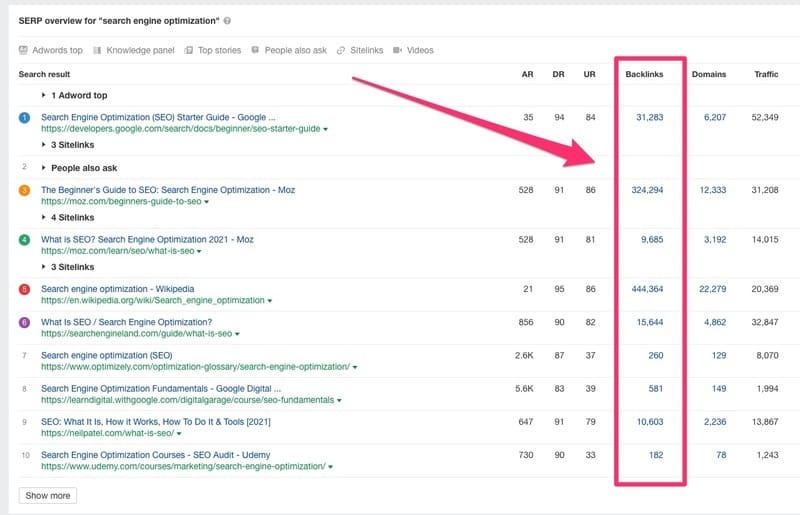
You need to look at the 4th column, the one that shows backlinks.
Look for an article that has 200 to 300 backlinks. The reason you don’t want more than 300 backlinks is that if you have too many sites in your outreach campaign, the project becomes unmanageable.
On the other hand, you want more than 200 backlinks because some of those links will drop out once you apply the ‘one link from one domain’ filter.
I’ve chosen this article by Optimizely because it has backlinks in the range I’m looking for (200 to 300):
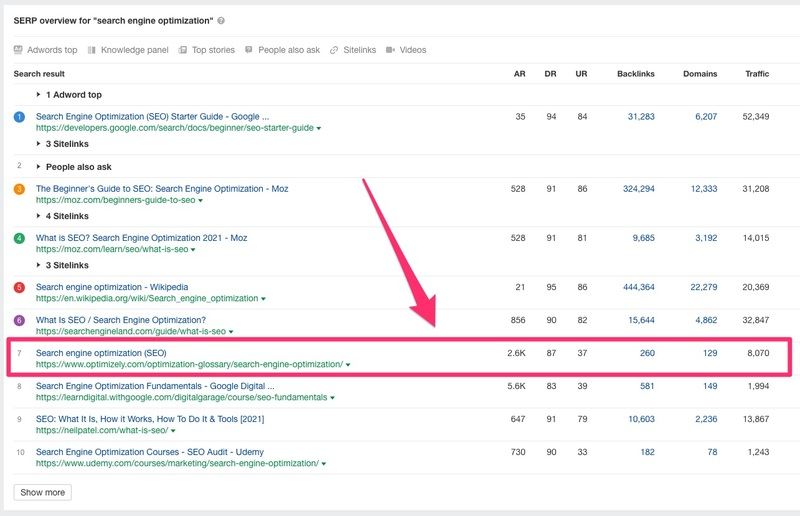
Step 3: Click on the link in the backlinks column:

Ahrefs will show you a list of all the sites that are linking to your ‘existing’ article. Click the ‘one link per domain’ option, and in the dropdown click on the ‘Dofollow’ option.
Choose ‘English’ (if that’s the language of your market) in the language dropdown, and then hit the export button and download the data as a CSV file:
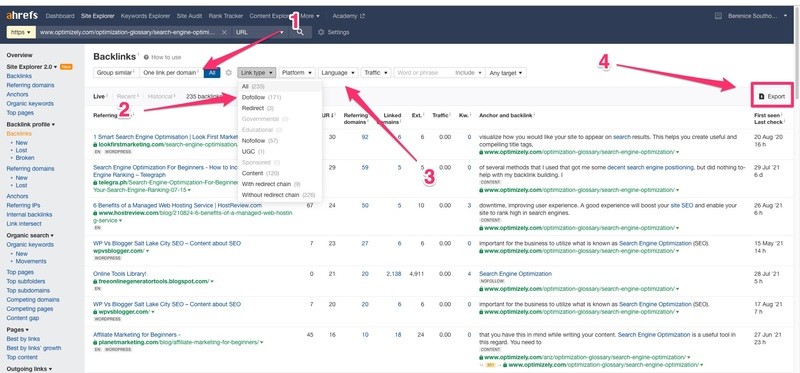
Step 4: Open the CSV file in Excel and sort the table by Domain Rating (DR), from high to low. Remove all websites with DR of less than 25. Then save the Excel file as a CSV file.
Step 5: Create a new campaign in Postaga and choose ‘Promote a Blog Post’ and then ‘Skyscraper’. Then upload the CSV file that you downloaded from Ahrefs:
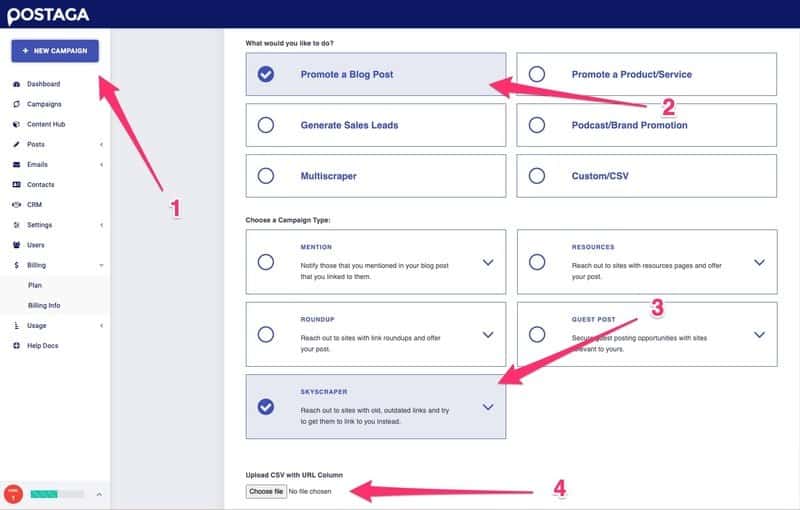
Next, click on the field that says ‘Referring Page URL’:
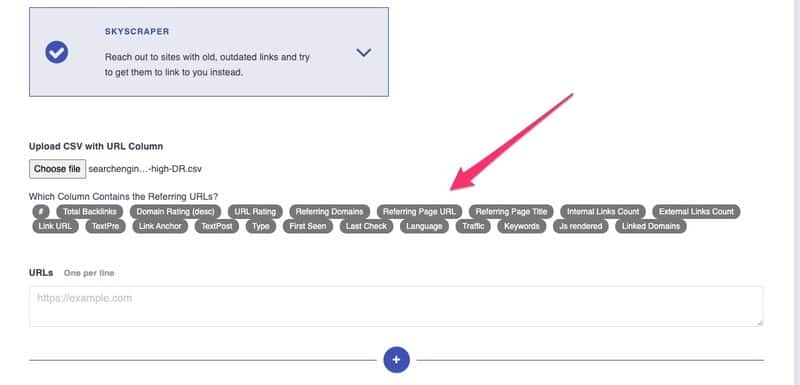
A list of all the URLs that link to the existing article will now appear. Scroll down to the bottom of that list and click ‘Analyze Links’:
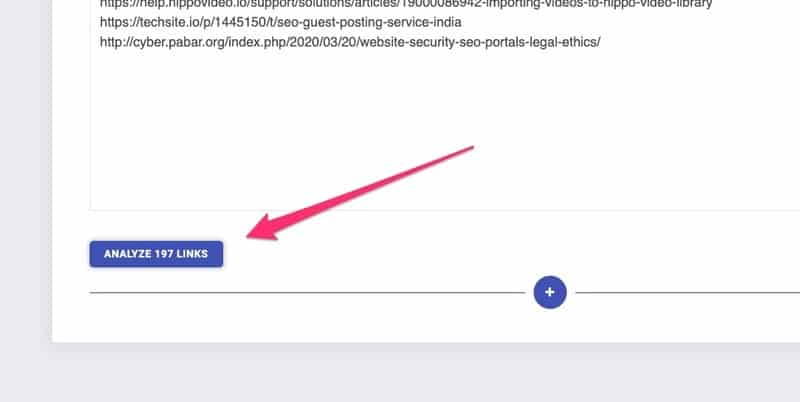
Postaga will now verify each link and then look for a name and email address for each domain.
Step 7: Choose an email template. Once Postaga has found the contact details for your list of URLs, you need to choose an email template for your campaign:
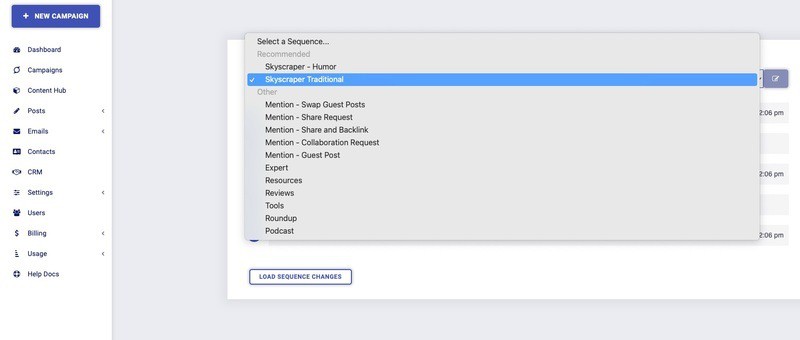
In the ‘Sequence’ panel, you can edit the email template and you can also adjust the interval between messages:
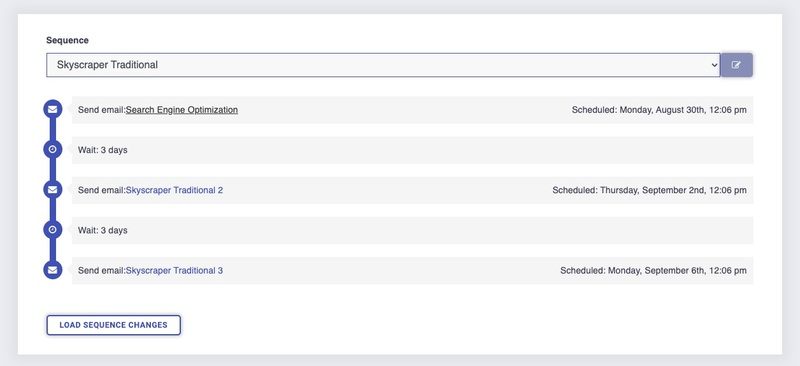
In the ‘Email’ panel, you can preview your outreach messages and make edits to individual emails. You can also pull in additional merge fields from the panel on the right side:
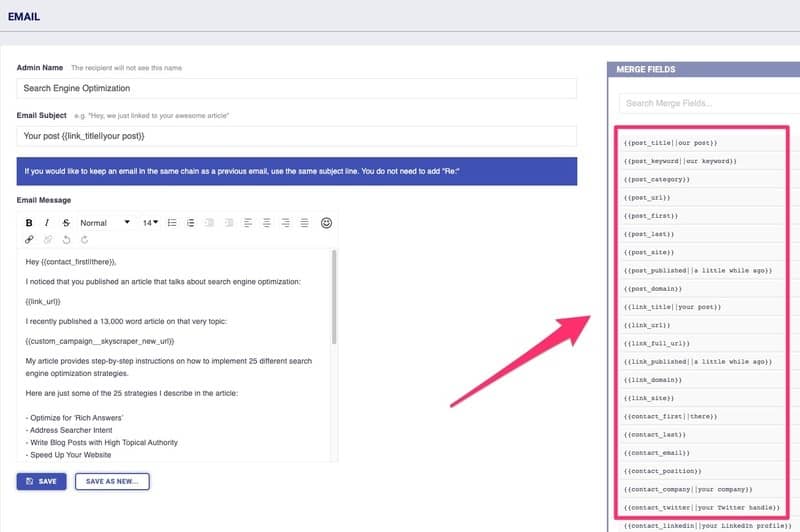
One thing I like about Postaga is that it will flag any contact who you’ve already emailed in a different campaign. This is important, because you don’t want to be bothering people unduly. Make sure to delete anyone who you already outreached to in a previous campaign.
Once you have checked that each email has a correct salutation and a correct subject line, just hit the ‘Schedule’ button:
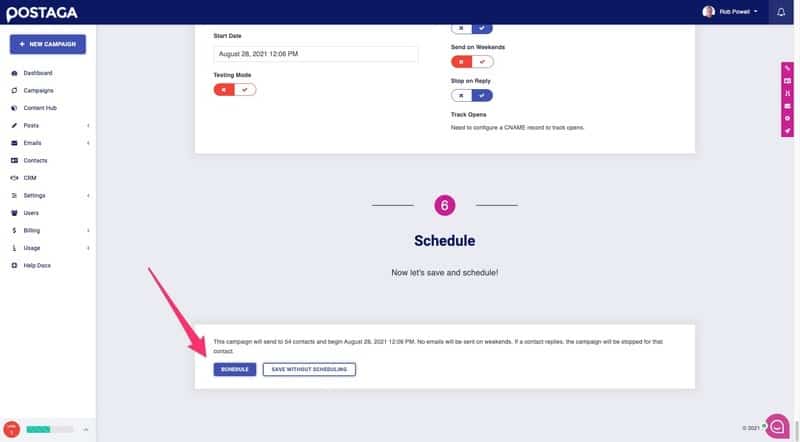
And that’s it – you’re on your way to earning some valuable backlinks.
Postaga Is Also A Prospecting Tool
One thing I should make clear about Postaga is that it does prospecting as well as outreach.
In the example above, I didn’t use the prospecting function in Postaga, as I already had a CSV file of website URLs that I downloaded from Ahrefs.
But Postaga is a fully functioning prospecting tool.
For example, if you want to do some ‘resource page’ link building, just type in the relevant keyword, and Postaga will scan the Internet looking for resource pages:
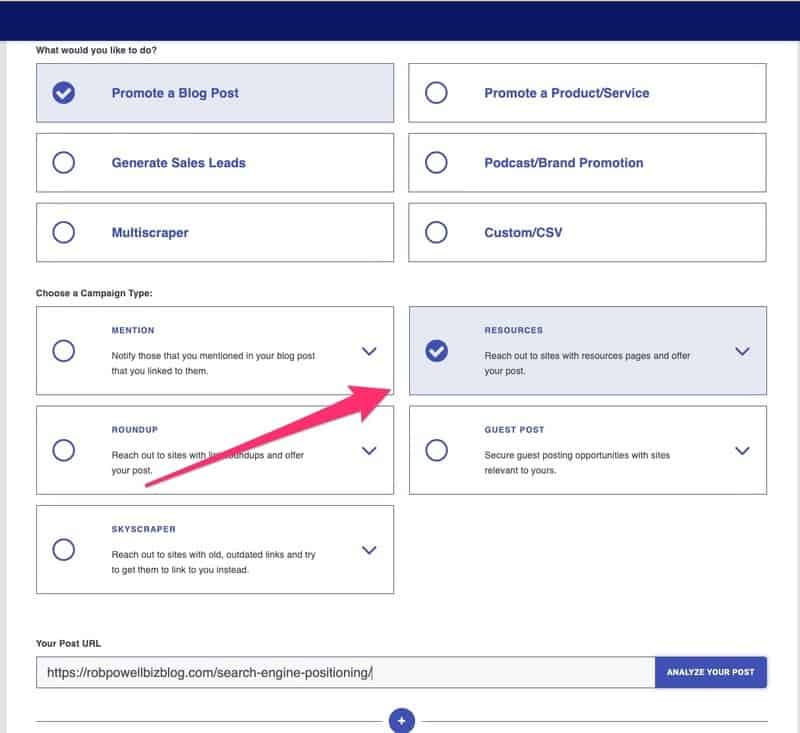
The software will come up with a list of names, email addresses, and URLs for relevant resource pages. You would then use Postaga to reach out to those websites and ask for your article to be added to their resource page.
You can do the same for link roundup opportunities: enter the URL of the article you want to submit for inclusion on link roundups, and Postaga will give you a list of prospective link roundup pages, together with names and email addresses for your outreach:
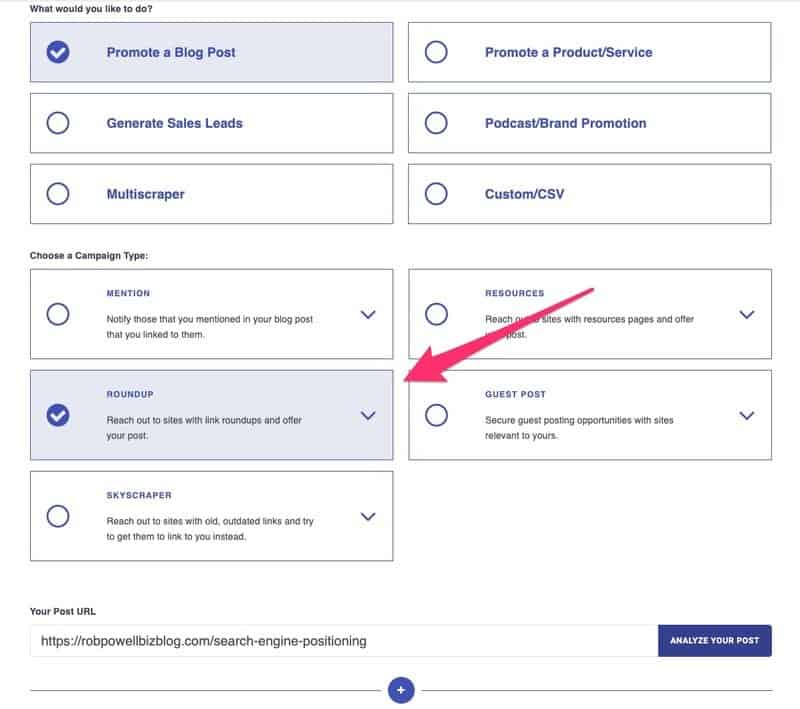
You can also use the prospecting function in Postaga for finding guest post opportunities and link roundup opportunities:
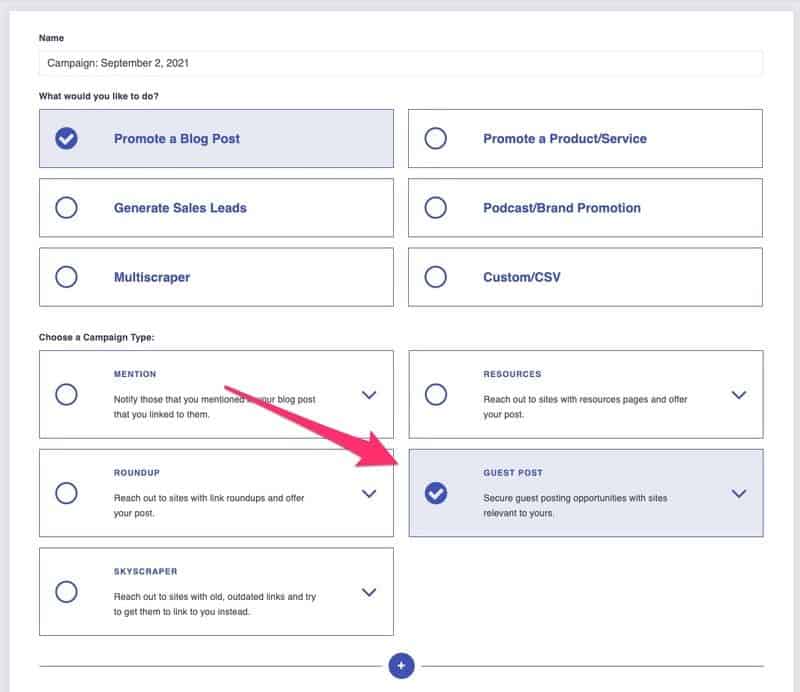
Alternatively, if you want to reach out to podcast owners (to be interviewed and get a backlink), just type in the relevant topic and Postaga will find names, email addresses and URLs for podcasts that you can reach out to:
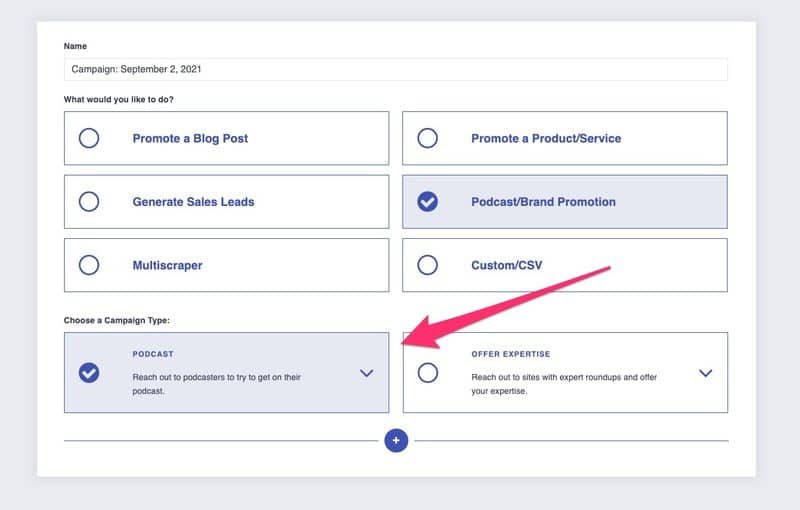
What’s the Success Rate for the Skyscraper Technique?
So what’s the success rate for this kind of link building? It depends on a number of factors.
In his original 2016 article about the skyscraper technique, Brian Dean reported an 11% success rate (he sent out 160 emails and got 17 links).
Bear in mind, however, that Brian was already a well-known figure in SEO and digital marketing. So he had brand name recognition that someone starting out doesn’t have.
In 2017 content marketer Dale Cudmore used the skyscraper technique on a brand new website. He got a conversion rate of 6.5% (he sent 232 emails and got 15 links).
SEO Nick used the skyscraper technique and achieved a 12% success rate (he sent 96 emails and got 12 links).
On the other hand Olga Mykhoparkina of Chanty used the skyscraper technique and got a zero success rate (she sent 200 emails and got no backlinks at all).
Here are some factors that will help increase your success rate with the skyscraper technique.
Personalize Your Outreach Email
Instead of sending an identical email to everyone, try to individualize each outreach email you send.
Postaga helps you do this by pulling in key excerpts from the recipient’s article. You can then use these excerpts in your email. This will make the recipient more likely to read your email and respond:
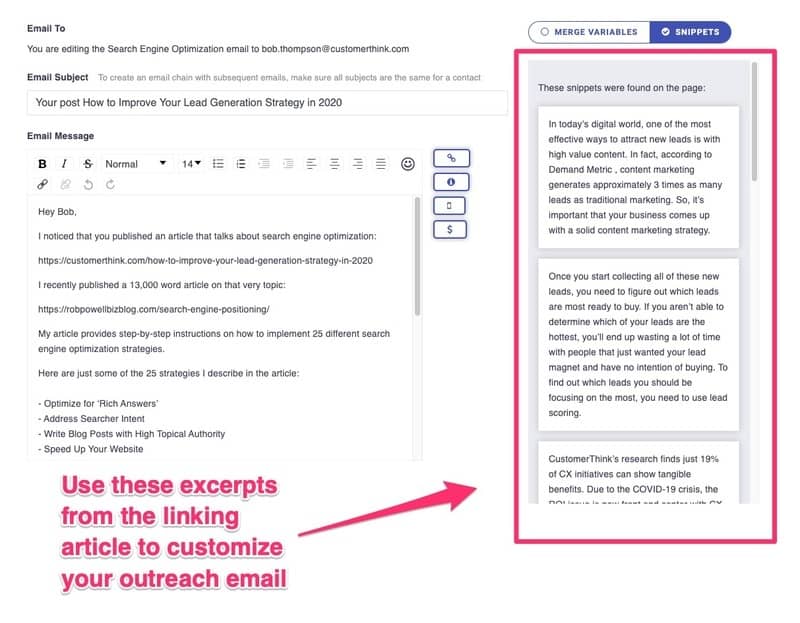
Explain Why Your Article is Better
Another way to increase the success rate of your skyscraper outreach is to explain clearly in your email why your article is authoritative and why it is better than the article the website is currently linking to.
Here’s an example from one of my own outreach campaigns:
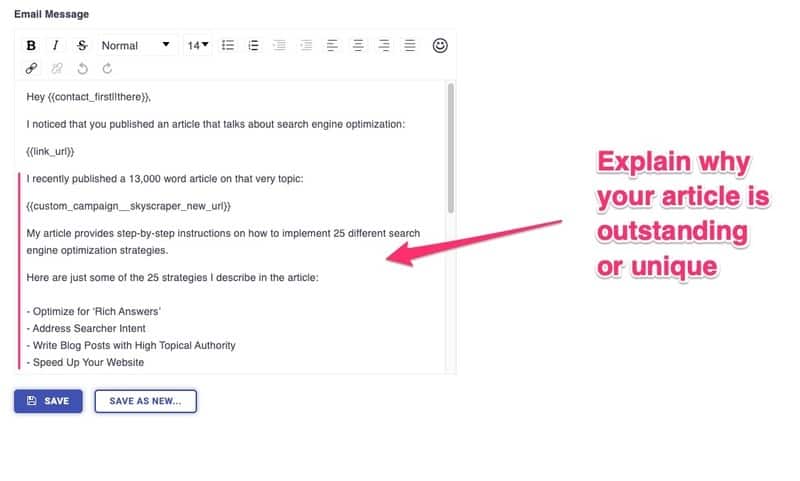
Filter For ‘dofollow’ Links
In Ahrefs, you can filter the results so that you only download a list of websites that gave a ‘dofollow’ link to the ‘existing’ article. That’s going to improve the chances of you getting a dofollow link from your outreach campaign.
Make Sure Your Skyscraper Content is Unique
The biggest factor affecting the success rate of your skyscraper link building campaign is the quality of the content that you are asking people to link to.
If it’s a 500-word article that you dashed off in less than an hour, that’s not going to work.
Your content needs to be genuinely outstanding.
It has to have something unique about it. It could be an article that covers the topic in more depth than any other article on the topic. It could be an article that presents a detailed case study with metrics and charts. It could be an article that compiles valuable statistics from a range of different sources. Or it could be an article that presents original research.
In a nutshell: the success of your skyscraper outreach will depend to a great extent on whether your content is truly outstanding.
Conclusion
The skyscraper technique is a proven link building strategy. However, it doesn’t work for everyone.
The two key things you need to do to make the skyscraper link building technique work for you are (1) have an outstanding piece of content that you want people to link to, and (2) personalize your outreach emails as much as possible.
If you have these two points covered, you can easily achieve a 5% to 7% success rate.



